How To Improve Your Hair Texture Naturally – 10 Ways
Boosting your hair texture will never be a challenge once you know what you should know.
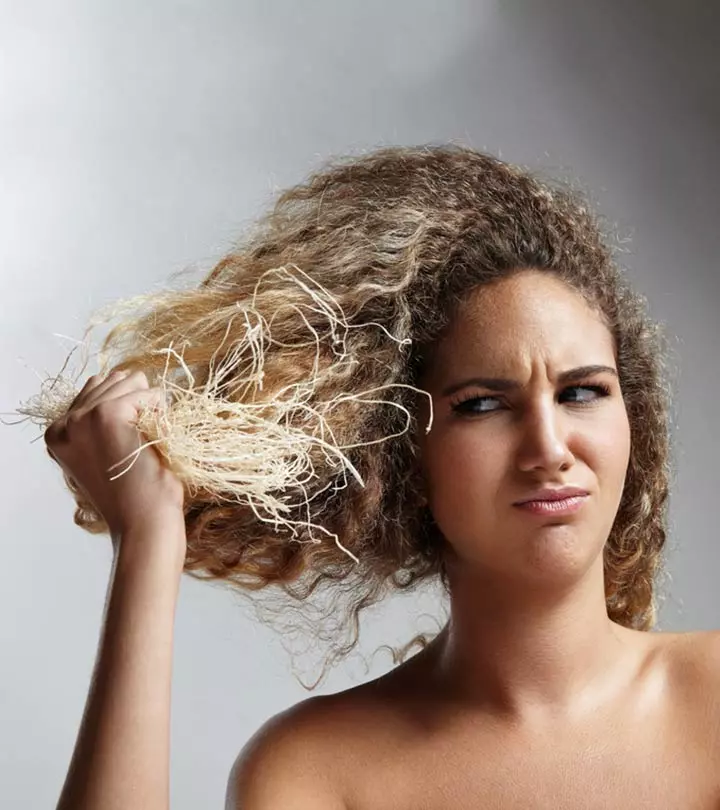
Image: Shutterstock
Hair texture is defined as the thickness or width of each hair strand and the following can be classified into three categories: fine, medium, or coarse. Constant exposure to pollution, dust, poor diet, and stress can change and affect your hair texture over time. On top of that, changing your hair color, bleaching, or straightening it for a long time can result in brittle and dry hair. Fortunately, there are a couple of remedies that can improve hair texture and avoid further damage to your hair. In this article, we explore some of the home remedies and foods that can improve your hair texture naturally.
In This Article
Why Does Your Hair Change Texture?

To achieve gorgeous hair we end up putting our locks through a lot. While some color their hair, a few others perm, smoothen, or straighten their locks. Exposing your hair frequently to chemical treatments and blow-drying makes it dry and brittle over time. If you want to know what causes these unwanted changes and how you can improve hair texture and aid shine enhancement, keep reading!
You may notice your hair changing texture with time because of:
- Hormonal imbalance (1)
- Poor diet
- Aging (2)
- Medications like painkillers, acne drugs, beta-blockers, etc.
- Chemical hair treatments like coloring, perming, and bleaching
- Stress
- Iron deficiency
- Pregnancy (3)
Any of these factors could be responsible for your changing hair texture. However, irrespective of what is causing your hair texture to change, you can adopt a new hair care routine to improve it. You can incorporate a few home remedies into the same. Learn more about them below.
Key Takeaways
- Hormonal issues, medication, poor diet, or exposure to chemical treatments may change your hair texture.
- Natural ingredients like coconut oil, aloe vera, and green tea can moisturize and improve your hair texture.
- Include carrots, spinach, kale, citrus fruits, eggs, fish, milk, and nuts in your diet for better and healthy hair texture.
- Avoid using heat styling tools and comb your hair carefully to prevent further hair damage.
How To Improve Your Hair Texture Naturally
Home Remedies To Improve Your Hair Texture
Most of the remedies discussed below help promote hair growth. Using these remedies and oil treatments regularly may reduce further damage and restore healthy and shiny hair. This will help you create a healthy daily hair care routine and transform your hair texture in the long run.
1. Coconut Oil
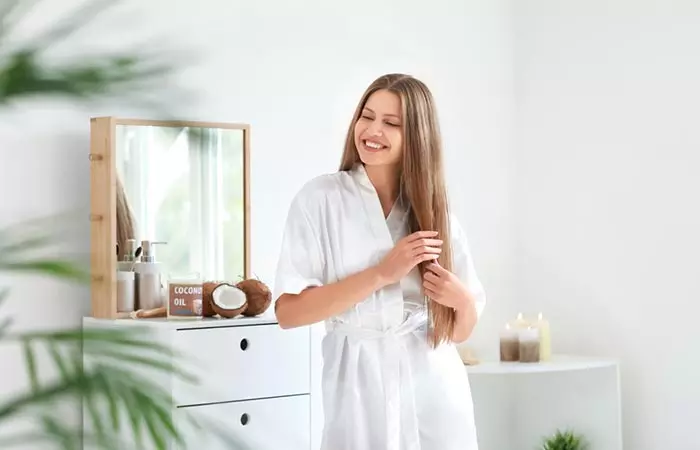
Coconut oil works as a natural conditioner with its moisturizing properties. It can penetrate hair shafts and prevent protein loss (4). This may help improve your hair texture and prevent breakage and split ends
Zaiby, a lifestyle blogger, shared her experience of applying coconut oil for 3 months on her hair and was amazed by the results. She said, “They are so smooth and silky soft even though I wash them with hot water (i)”
You Will Need
1 tablespoon of cold-pressed coconut oil
What You Have To Do
- Take a tablespoon of coconut oil and massage it into your hair.
- Leave it on for 30 to 60 minutes.
- Wash it off with a mild cleanser.
How Often You Should Do This
You must do this 1 to 2 times a week.
2. Aloe Vera
Aloe vera gel is full of nutrients like vitamins A, B12, C and E that are beneficial for your hair. It can be used to prevent hair issues like hair loss and dandruff. Include aloe vera in your scalp care routine to prevent infections that can affect hair health (5). It helps in deep conditioning, strengthening, and moisturizing dry and brittle hair. It can also protect your hair from UV damage and prevent conditions like seborrheic dermatitis (6), (7).
You Will Need
- Aloe vera gel (as required)
- A clean warm towel
What You Have To Do
- Take a couple of aloe vera leaves and scrape the gel from the inside.
- Blend well and apply the gel to your scalp and hair.
- Wrap your hair with a warm and damp towel.
- Leave it on for at least 15 to 30 minutes.
- Rinse your hair as usual.
How Often You Should Do This
Do this 2 to 3 times a week.
3. Onion Juice
Onion juice contains sulfur, which is important for healthy hair. It gives hair its strength and helps with elasticity improvement. Thus, the deficiency of sulfur can result in dry and brittle hair (8). Onion juice also nourishes the hair follicles, aiding hair regrowth and preventing thinning (9).
You Will Need
1-2 tablespoons of onion juice
What You Have To Do
- Take one to two tablespoons of onion juice and apply it to your scalp.
- Leave it on overnight.
How Often You Should Do This
Do this 2 to 3 times a week.
4. Amla Oil

Amla oil contains vitamin C, a powerful antioxidant that provides nourishment to your hair and also helps with graying (10).
You Will Need
1-2 tablespoons of amla oil
What You Have To Do
- Apply one to two tablespoons of amla oil to your scalp and hair.
- Leave it on for 30 to 60 minutes before washing it off with water.
How Often You Should Do This
You may do this 1 to 2 times a week.
5. Green Tea
Green tea contains many beneficial polyphenols that are excellent for hair growth stimulation. It can also prevent hair loss and make your hair healthy (11). However, there are no scientific studies to prove the efficacy of green tea in improving hair texture. The current studies prove its effect only on hair growth.
You Will Need
- 1 teaspoon of green tea
- 1 cup of water
What You Have To Do
- Add a teaspoon of green tea to a cup of water.
- Bring it to a boil in a saucepan.
- Simmer and strain.
- Allow the tea to cool a little before drinking it.
How Often You Should Do This
You must have green tea twice daily for the desired effects.
6. Olive Oil
Olive oil is loaded with vitamin E and antioxidants, which work wonderfully in enhancing hair growth and texture. Olive oil helps in moisturizing and conditioning your hair naturally (12).
You Will Need
1-2 tablespoons of olive oil
What You Have To Do
- Take one or two tablespoons of olive oil and apply it to your scalp and hair.
- Massage for a few minutes.
- Leave it on for 30 to 40 minutes.
- Wash your hair with a mild cleanser.
How Often You Should Do This
You must do this twice every week.
7. Eggs

The yolk of the egg is rich in fats and protein that are excellent for split end prevention and curbing brittle hair and breakage. It contains peptides that nourish the hair and aid hair growth (13).
You Will Need
- 1-2 eggs
- A shower cap
What You Have To Do
- Whip one or two eggs.
- Apply the mixture to your scalp and hair.
- Cover your head with a shower cap.
- Leave it on for at least an hour.
- Wash your hair with a mild cleanser.
How Often You Should Do This
You must do this once a week for optimum benefits.
Note: To avoid the egg stench, you can add a few drops of any essential oil to the mix.
8. Vitamins
Deficiencies in certain vitamins can also damage your hair texture (14). Vitamins A, C, D, and E are necessary for moisturized and damage-free hair.
These vitamins not only nourish your hair but also help with split ends and hair loss. Increase your vitamin intake by consuming foods like carrots, spinach, kale, citrus fruits, eggs, fish, milk, and nuts.
9. Essential Oils
a. Lavender Oil
Lavender oil can help prevent hair loss with hair growth-promoting activities. It can also increase the number of hair follicles, thus increasing the density of your hair (15). This may help promote your hair health.
You Will Need
- 6 drops of lavender oil
- 1-2 tablespoons of coconut oil (or any other carrier oil)
What You Have To Do
- Add six drops of lavender oil to one to two tablespoons of any carrier oil.
- Mix well and apply it to your hair and scalp.
- Massage gently and leave it on for 30 to 60 minutes.
- Wash your hair with a mild cleanser.
How Often You Should Do This
You must do this at least once a week.
b. Rosemary Oil
Using Rosemary oil for hair growth helps. It enhances the hair texture and increases the density of hair and is also apt for treating hair loss (16). This remedy is beneficial for people with fine and brittle hair.
You Will Need
- 6 drops of rosemary oil
- 1-2 tablespoons of any carrier oil
What You Have To Do
- Add six drops of rosemary oil to one or two tablespoons of any carrier oil.
- Mix well and massage it into your scalp and hair.
- Leave it on for 40 to 60 minutes.
- Rinse your hair with a mild cleanser.
How Often You Should Do This
Do this 1 to 2 times a week.
Your diet also matters when it comes to enhancing the health of your hair. Eating right with required nutrition will improve the efficiency of the above remedies. Given below are some foods that will soften texture to help you achieve healthier hair.
10. Fenugreek
Fenugreek seeds exhibit anti-inflammatory and antimicrobial properties (17). Some research suggests they may also help treat dandruff (18).
You Will Need
- 2 to 3 tablespoons of fenugreek seeds
- 1 to 1.5 cups of water
What You Have To Do
- Soak the fenugreek seeds in water overnight.
- Blend the soaked seeds into a smooth paste the next morning. You also may add a little water to produce a thicker paste.
- Apply this paste to your hair and scalp. Ensure your hair is dry or slightly damp prior.
- Leave the fenugreek paste on your hair for about 30 to 45 minutes.
- Rinse your hair with lukewarm water.
How Often You Should Do This
Once or twice a week
These are some effective home remedies that help improve hair health. Let’s now explore certain food options that can help enhance hair texture.
Best Foods For Better Hair Texture
Nutrients (and their foods sources) that are known to help in improving the texture of the hair are (19):
- Vitamin A-rich foods like carrots, eggs, dairy products, poultry, and fish.
- Foods that are rich in iron like fish, poultry, nuts, beans, grains, raisins, and spinach.
- Omega-3 foods like flaxseed, walnuts, and fatty fish.
- Vitamin H and Biotin-rich foods like oysters, eggs, avocados, soybean, oatmeal, legumes, and mushrooms.
It is time to take a few tips to prevent damage to your hair strands.
Prevention Tips
- Always choose a shampoo that is formulated for your hair type.
- Consider using pH-balanced products to keep your hair and scalp healthy.
- Condition your hair after every shampoo.
- Use hair masks, packs, and products that boost hydration and keep hair healthy.
- Comb your hair carefully.
- Avoid using blow dryers and heat styling.
- Do not rub your hair too hard while towel drying.
- If you have dry and rough hair that is prone to frizziness, use a frizz control hair serum.
- Use damage repair hair products to restore excessively treated, colored, frizzy, or dry hair.Hair texture can be affected by daily pollution and dirt, stress, iron deficiency, hormonal imbalances, chemical and heating hair treatments, medications, and aging.
 Quick Tip
Quick TipTo get a clearer understanding of your hair texture, here’s a detailed look into the different hair types.
Types Of Hair
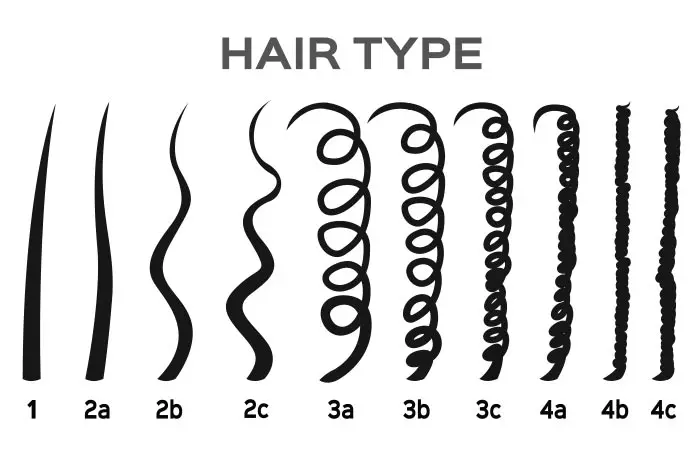
The hair types fall under categories 1 to 4. Within these categories, the amount of curl in the hair strands is represented with a letter ranging from ‘a’ to ‘c’.
Type 1 Hair
This type of hair is naturally straight and has no curls. It is usually shiny and oily due to lack of curls. Within the Type 1 category, there are Type 1a, Type 1b, and Type 1c subcategories.
- Type 1a is completely flat hair.
- Type 1b has comparatively more body than Type 1a and is not completely flat.
- Type 1c is generally straight with a few areas that bend slightly.
Type 2 Hair
If your hair is naturally wavy, forming an “S” shape, it falls under the Type 2 category. This type is not as oily as Type 1 hair, but it is neither too dry. Type 2 hair is further categorized as Type 2a, Type 2b, and Type 2c.
- Type 2a hair has several loose beach waves all over the head.
- Type 2b hair is wavier than Type 2a and more defined and tightly drawn than the former.
- Type 2c hair is often very tightly drawn, so much so that it forms loose spiral curls.
Type 3 Hair
This hair type is naturally curly and forms a defined “S”. Type 3 hair is known to form ringlets without having to use any hair products or tools and is usually dry. Under the Type 3 hair category, there are Type 3a, Type 3b, and Type 3c types.
- Type 3a hair forms smooth curls that may even be silky to touch.
- Type 3b hair consists of springy and spiraled curls. Many half-black women possess this hair type.
- Type 3c hair is very tightly drawn, coily, and highly textured.
Type 4 Hair
Type 4 hair is tightly drawn but does not form ringlets like Type 3. Also, this type of hair hardly changes shape whether it is dry or wet. Due to the shape of this hair type, you will notice that its hair strands are extremely dry. Type 4a, Type 4b, and Type 4c types come under this hair category.
- Type 4a hair is usually tightly drawn and forms tight coils or cylindrical curls.
- Type 4b has a crimpy pattern, even more than cylindrical curls.
- Type 4c is almost “Z” shaped and has a zigzag pattern. It has little to no defined sections.
 Quick Tip
Quick TipInfographic: 5 DIY Remedies To Improve Hair Texture
Frequent styling with hot tools, pollution, stress, poor diet, and an unhealthy lifestyle can wreak havoc on the hair. So, the next time you complain about your frizzy, unkempt hair, know where it’s coming from. Want to bring your dry, damaged hair back to life? Whether you have fine, medium, or coarse hair, to get healthier-looking locks, check out the infographic below for some easy DIY remedies. Illustration: StyleCraze Design Team

Hair texture can be affected by daily pollution and dirt, stress, iron deficiency, hormonal imbalances, chemical and heating hair treatments, medications, and aging.
However, natural ingredients like essential oils, coconut oil, green tea, and aloe vera can greatly improve your hair texture. These ingredients come with hair health-boosting properties that strengthen, nourish, and replenish your hair, maintaining its texture and smoothing it.
Add these home remedies to your daily hair care routine to aid hair texture revitalization and boost shine and hair health.
Frequently Asked Questions
Does hair texture change with age?
Yes, your hair can change in many ways with aging, including changes in its texture.
Does shaving your head change your hair texture?
Shaving can neither change your hair texture nor make it grow faster or darker.
How to test your hair texture?
A relatively easy way to test your hair texture is:
• Wash your hair.
• Air-dry it.
• Cut a sewing thread that is 6 to 8 diameters long.
• Pull out a dry hair and place it next to the thread.
• Compare the hair strand to the thread.
• Thin hair – If your hair strand is thinner than the thread
• Medium hair – If the hair strand is as thick as the thread
• Thick hair – If the hair strand is thicker than the thread
Can hair texture be changed permanently?
You cannot change your hair texture permanently by using natural methods. However, chemical procedures like perms work by restructuring the bonds in the hair strands to change your hair texture for a longer period. Hair texturizing can be a great option if you are looking for a texture makeover without a long-term commitment. However, it is important to note that the results of these procedures will grow out and require re-touching.
Does shampoo change hair texture?
The ingredients in some shampoos may temporarily change the texture of hair and make it appear drier, softer, thicker, or smoother. It largely depends on the type of shampoo used and whether it suits your hair type.
Illustration: How To Improve Your Hair Texture Naturally – 10 Ways
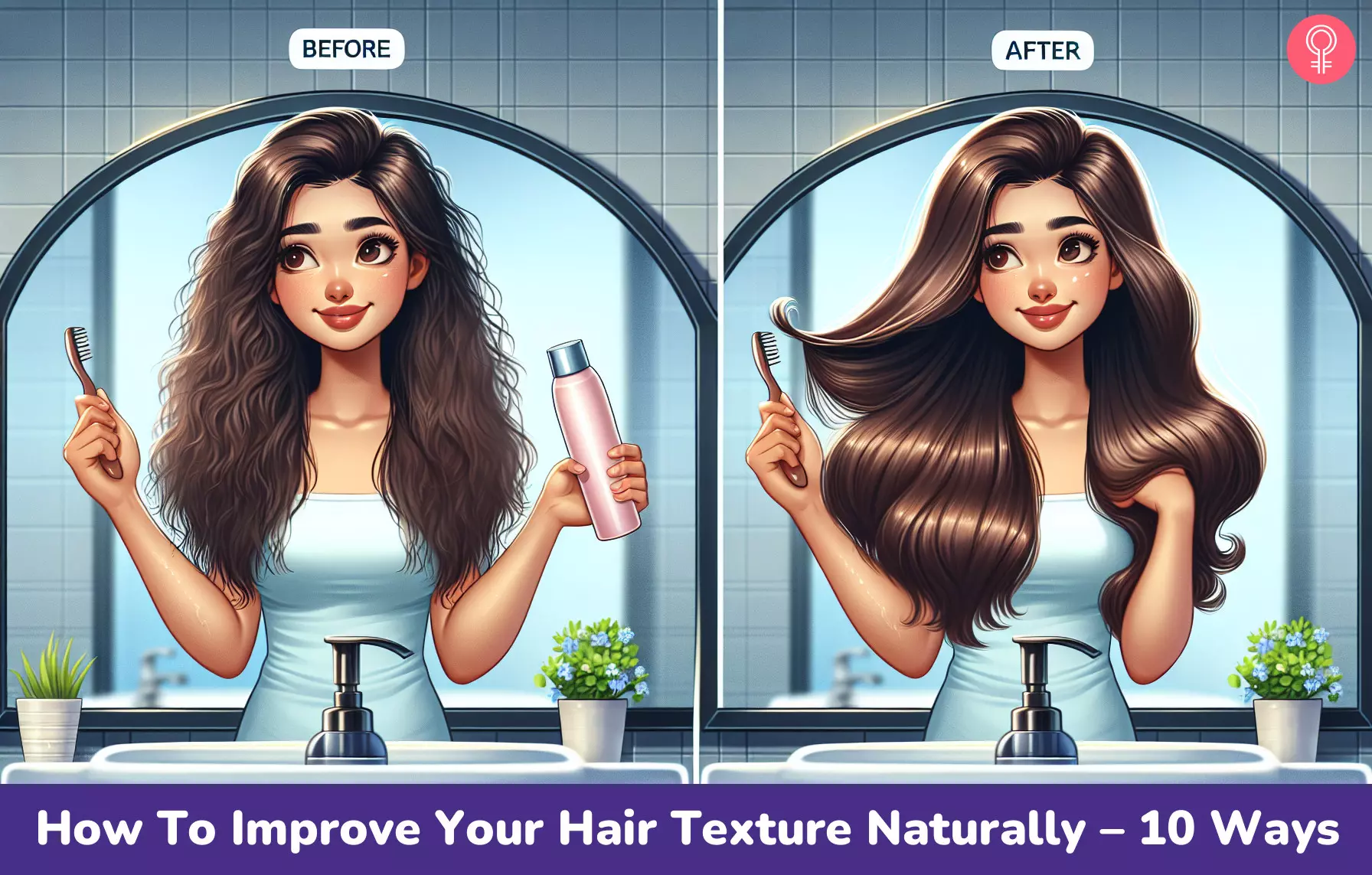
Image: Dall·E/StyleCraze Design Team
Learn 8 easy tips to keep your hair naturally healthy and looking great! Get the best advice on how to keep your hair healthy and strong. Scroll down to watch the video.
Personal Experience: Source
StyleCraze's articles are interwoven with authentic personal narratives that provide depth and resonance to our content. Below are the sources of the personal accounts referenced in this article.
i. Coconut Oil for Hairhttps://allthingsrainbow.wordpress.com/2014/12/23/coconut-oil-for-hair-3/
References
Articles on StyleCraze are backed by verified information from peer-reviewed and academic research papers, reputed organizations, research institutions, and medical associations to ensure accuracy and relevance. Read our editorial policy to learn more.
- Mirmirani, Paradi. “Managing hair loss in midlife women.” Maturitas Vol. 74,2 (2013): 119-22. doi:10.1016/j.maturitas.2012.10.020
https://pubmed.ncbi.nlm.nih.gov/23182767// - “Aging Changes in Hair and Nails: MedlinePlus Medical Encyclopedia.” MedlinePlus, U.S. National Library of Medicine.
https://medlineplus.gov/ency/article/004005.htm - “Skin and Hair Changes during Pregnancy: MedlinePlus Medical Encyclopedia.” MedlinePlus, U.S. National Library of Medicine.
https://medlineplus.gov/ency/patientinstructions/000611.htm - Rele, Aarti S, and R B Mohile. “Effect of mineral oil, sunflower oil, and coconut oil on prevention of hair damage.” Journal of Cosmetic Science 54,2 (2003): 175-92.
https://pubmed.ncbi.nlm.nih.gov/12715094/ - “Aloe Vera: A Potential Herb And Its Importance” Journal Of Chemical And Pharmaceutical Research 2010.
https://www.jocpr.com/articles/aloe-vera–a-potential-herb-and-its-medicinal-importance.pdf - “A Double-Blind, Placebo-Controlled Trial of an Aloe Vera (A. Barbadensis) Emulsion in the Treatment of Seborrheic Dermatitis.” Taylor & Francis.
www.tandfonline.com/doi/abs/10.3109/09546639909055904. - Rahmani, Arshad H et al. “Aloe vera: Potential candidate in health management via modulation of biological activities.” Pharmacognosy reviews 9,18 (2015): 120-6. doi:10.4103/0973-7847.162118
https://www.ncbi.nlm.nih.gov/pmc/articles/PMC4557234/ - Goluch-Koniuszy, Zuzanna Sabina. “Nutrition of women with hair loss problem during the period of menopause.” Przeglad Menopauzalny = Menopause Review 15,1 (2016): 56-61. doi:10.5114/pm.2016.58776
https://www.ncbi.nlm.nih.gov/pmc/articles/PMC4828511/ - Sharquie, Khalifa E, and Hala K Al-Obaidi. “Onion juice (Allium cepa L.), a new topical treatment for alopecia areata.” The Journal of dermatology 29,6 (2002): 343-6. doi:10.1111/j.1346-8138.2002.tb00277.x
https://pubmed.ncbi.nlm.nih.gov/12126069/ - Yu, Jae Young et al. “Preclinical and Clinical Studies Demonstrate That the Proprietary Herbal Extract DA-5512 Effectively Stimulates Hair Growth and Promotes Hair Health.” Evidence-Based Complementary and Alternative Medicine : eCAM 2017 (2017): 4395638. doi:10.1155/2017/4395638
https://www.ncbi.nlm.nih.gov/pmc/articles/PMC5429933/ - Esfandiari, Adeleh, and Paul Kelley. “The effects of tea polyphenolic compounds on hair loss among rodents.” Journal of the National Medical Association 97,6 (2005): 816-8.
https://www.ncbi.nlm.nih.gov/pmc/articles/PMC2569505/ - Zaid, Abdel Naser et al. “Ethnopharmacological survey of home remedies used for treatment of hair and scalp and their methods of preparation in the West Bank-Palestine.” BMC Complementary and Alternative Medicine 17,1 355. 5 Jul. 2017, doi:10.1186/s12906-017-1858-1
https://www.ncbi.nlm.nih.gov/pmc/articles/PMC5499037/ - Nakamura, Toshio et al. “Naturally Occurring Hair Growth Peptide: Water-Soluble Chicken Egg Yolk Peptides Stimulate Hair Growth Through Induction of Vascular Endothelial Growth Factor Production.” Journal of medicinal food 21,7 (2018): 701-708. doi:10.1089/jmf.2017.4101
https://pubmed.ncbi.nlm.nih.gov/29583066/ - Finner, Andreas M. “Nutrition and hair: deficiencies and supplements.” Dermatologic Clinics Vol. 31,1 (2013): 167-72. doi:10.1016/j.det.2012.08.015
https://pubmed.ncbi.nlm.nih.gov/23159185/ - Lee, Boo Hyeong et al. “Hair Growth-Promoting Effects of Lavender Oil in C57BL/6 Mice.” Toxicological Research vol. 32,2 (2016): 103-8. doi:10.5487/TR.2016.32.2.103
https://www.ncbi.nlm.nih.gov/pmc/articles/PMC4843973/ - Panahi, Yunes et al. “Rosemary oil vs minoxidil 2% for the treatment of androgenetic alopecia: a randomized comparative trial.” Skinmed Vol. 13,1 (2015): 15-21.
https://pubmed.ncbi.nlm.nih.gov/25842469/ - Fenugreek a multipurpose crop: Potentialities and improvements
https://www.ncbi.nlm.nih.gov/pmc/articles/PMC4894452/ - Fenugreek Leaf Extract and Its Gel Formulation Show Activity Against Malassezia furfur
https://www.ncbi.nlm.nih.gov/pmc/articles/PMC6998042/ - Guo, Emily L, and Rajani Katta. “Diet and hair loss: effects of nutrient deficiency and supplement use.” Dermatology practical & conceptual vol. 7,1 1-10. 31 Jan. 2017, doi:10.5826/dpc.0701a01
https://www.ncbi.nlm.nih.gov/pmc/articles/PMC5315033/
Read full bio of Vd. Naveen Sharma
Read full bio of Shaheen Naser
Read full bio of Anjali Sayee
Read full bio of Monomita Chakraborty





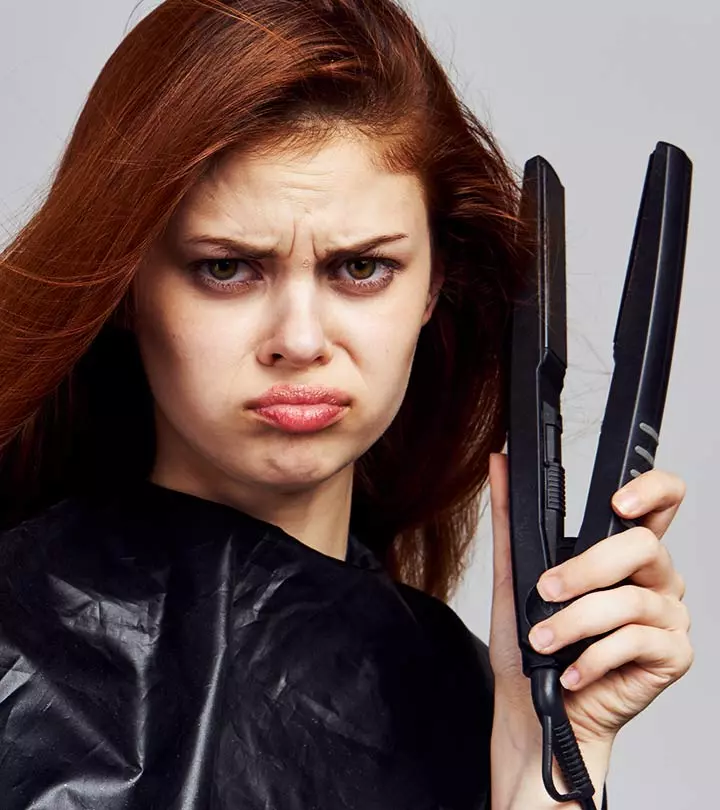
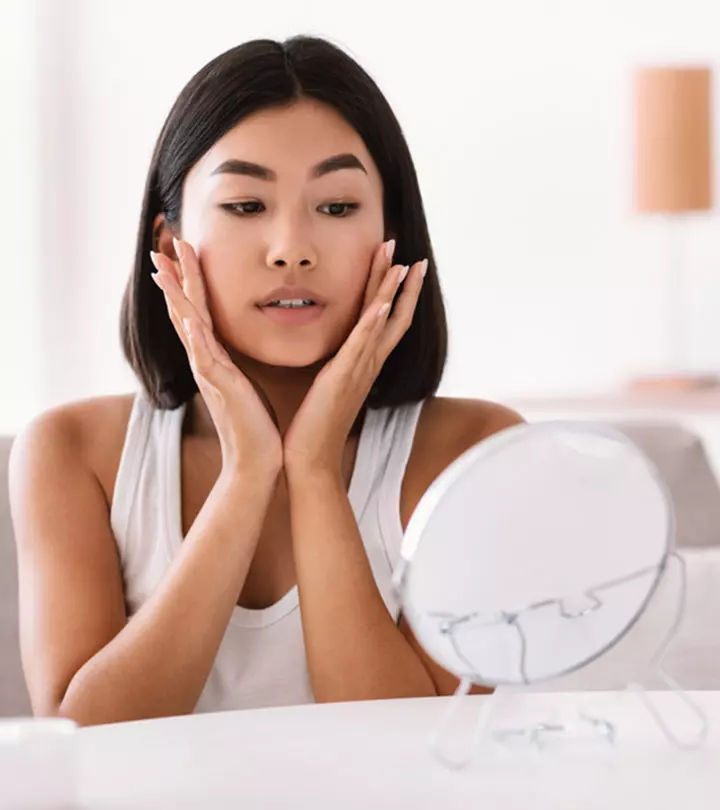
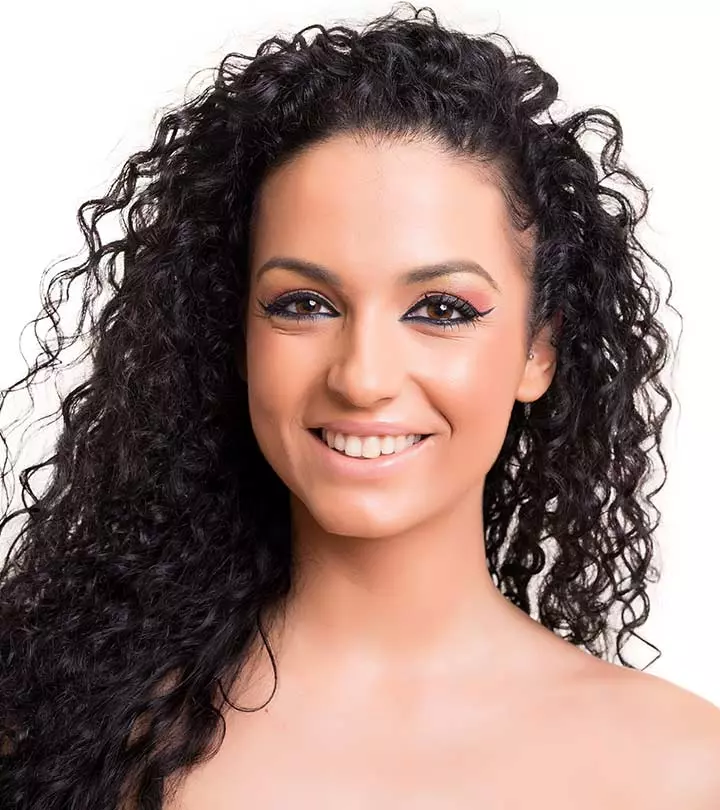



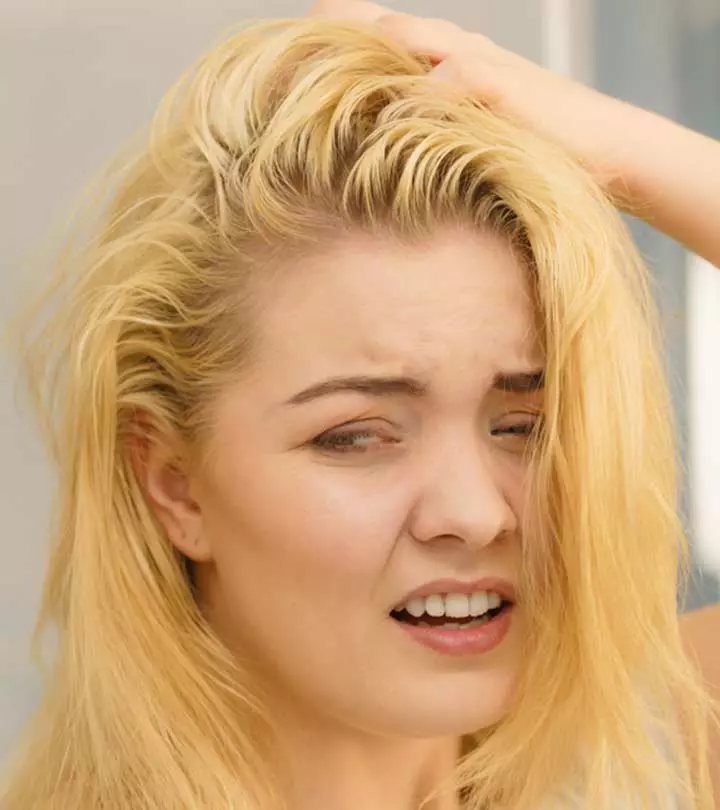
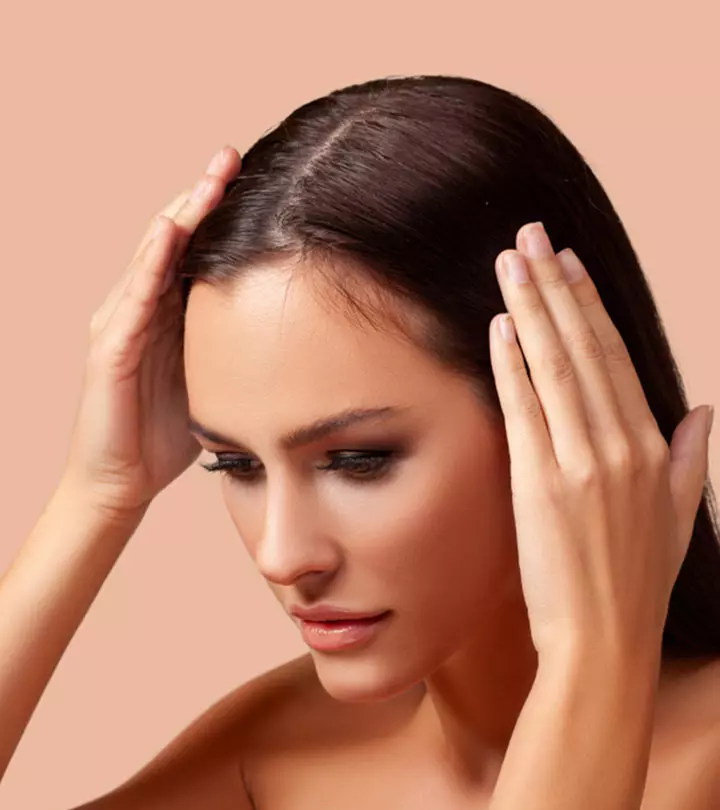
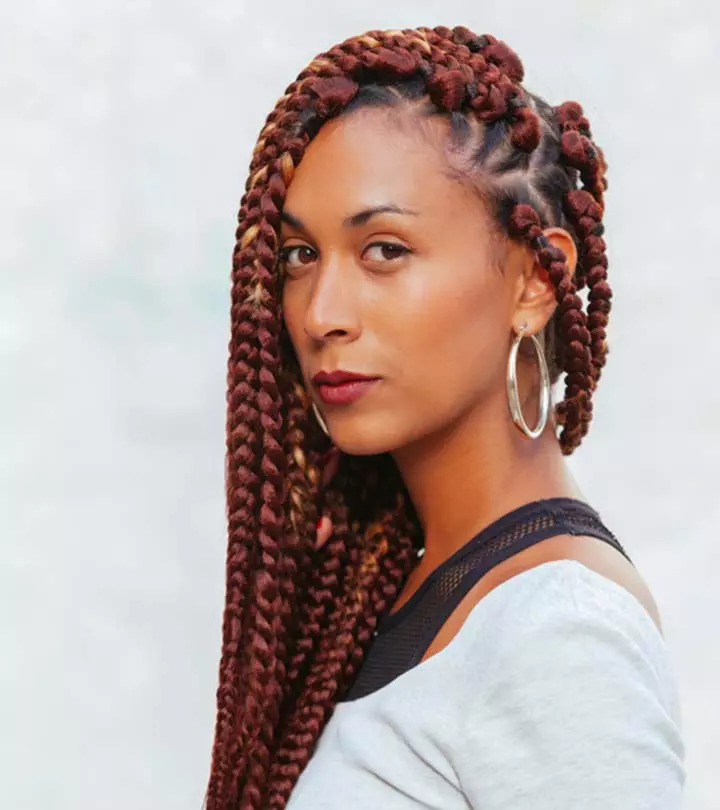

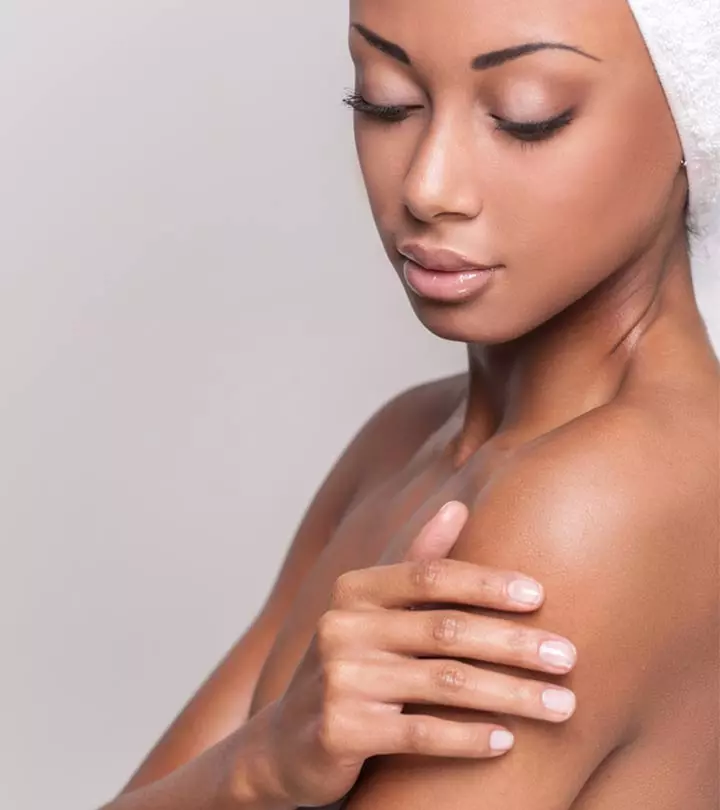
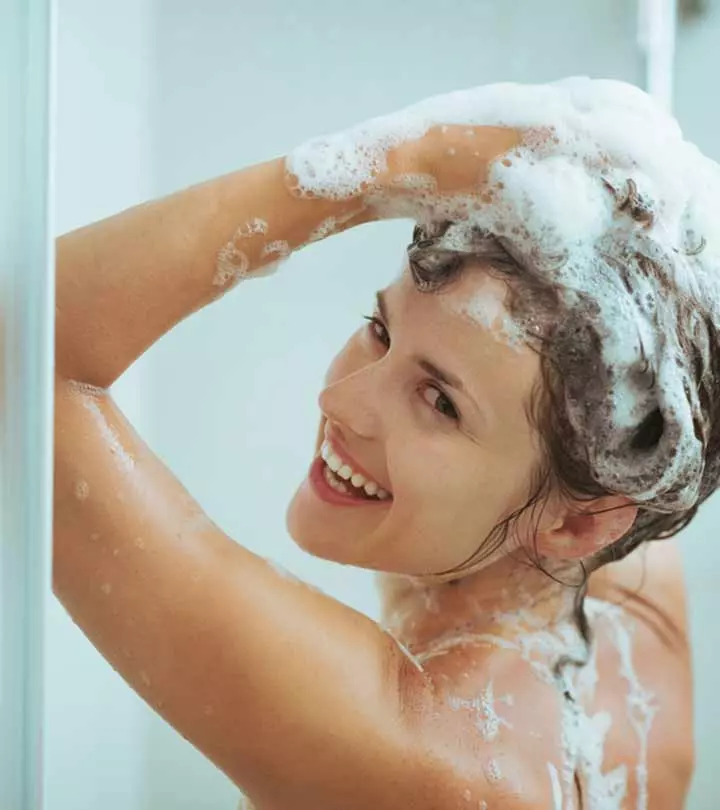
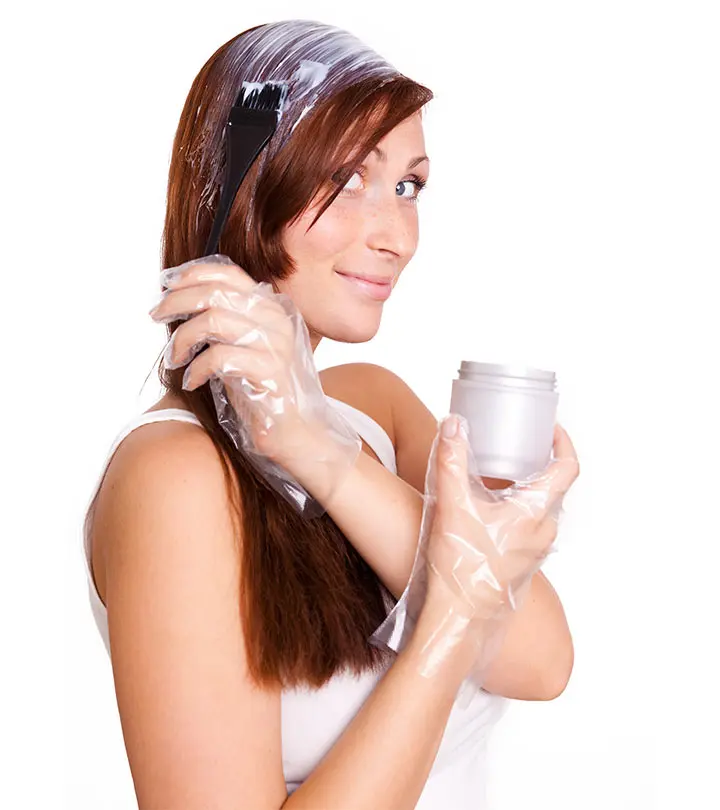
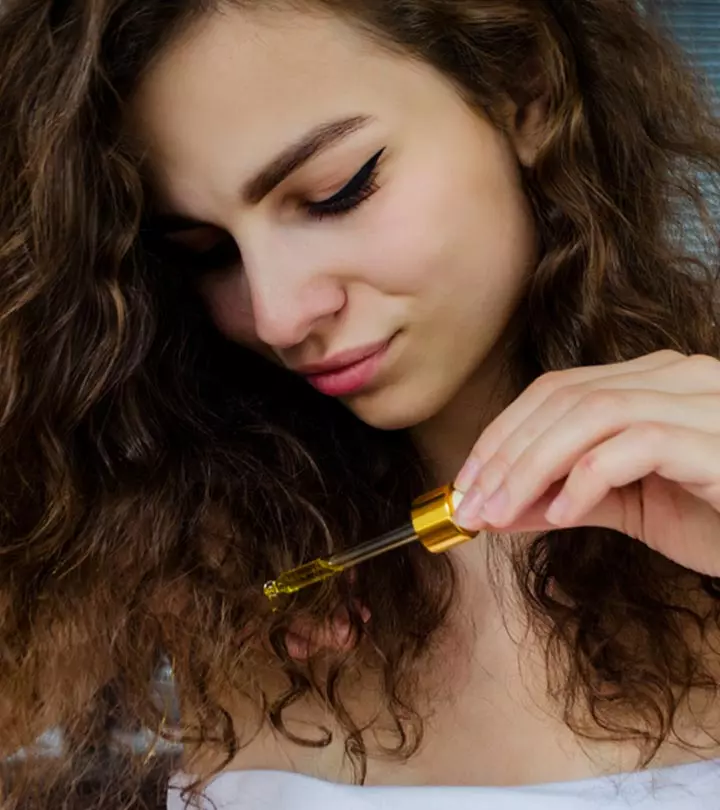
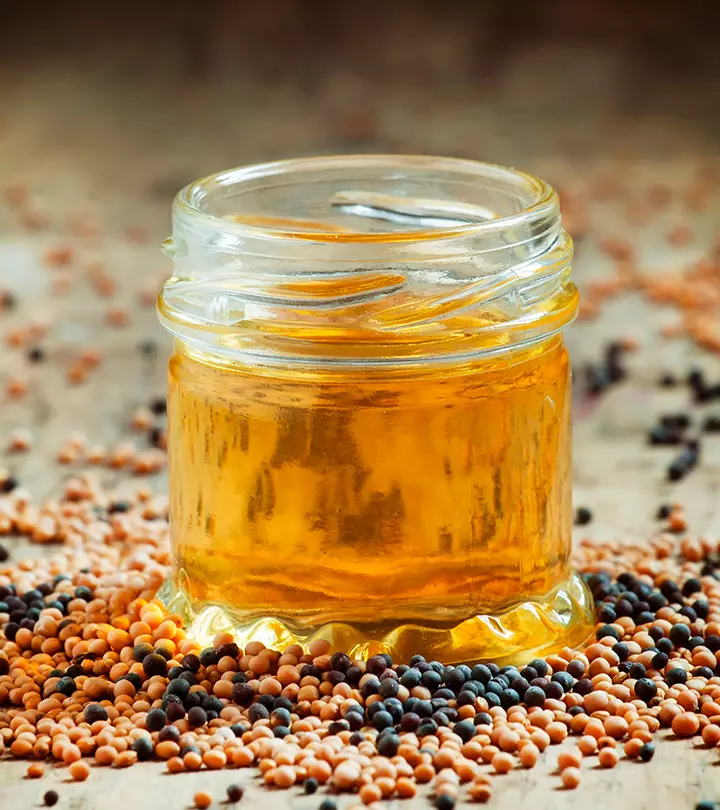
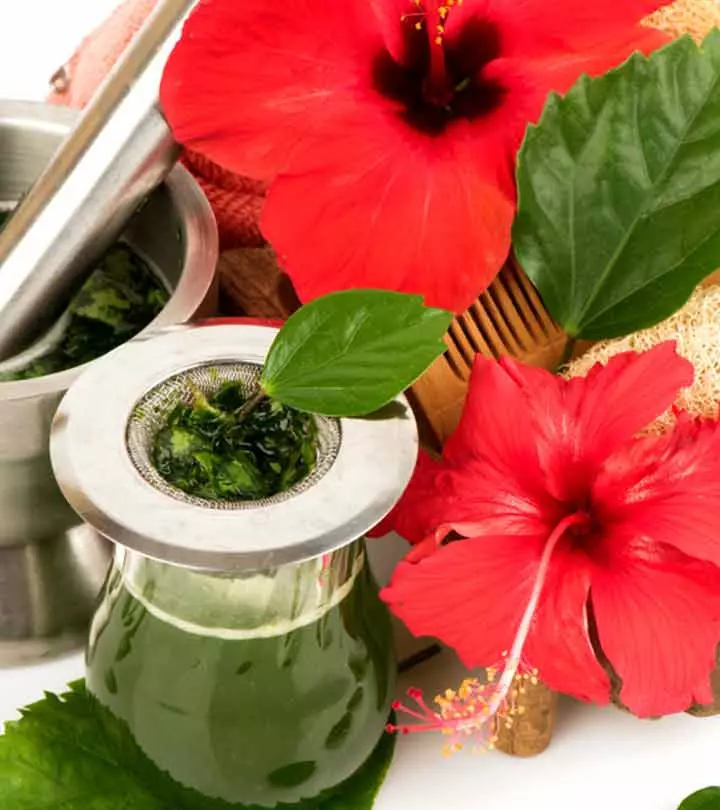
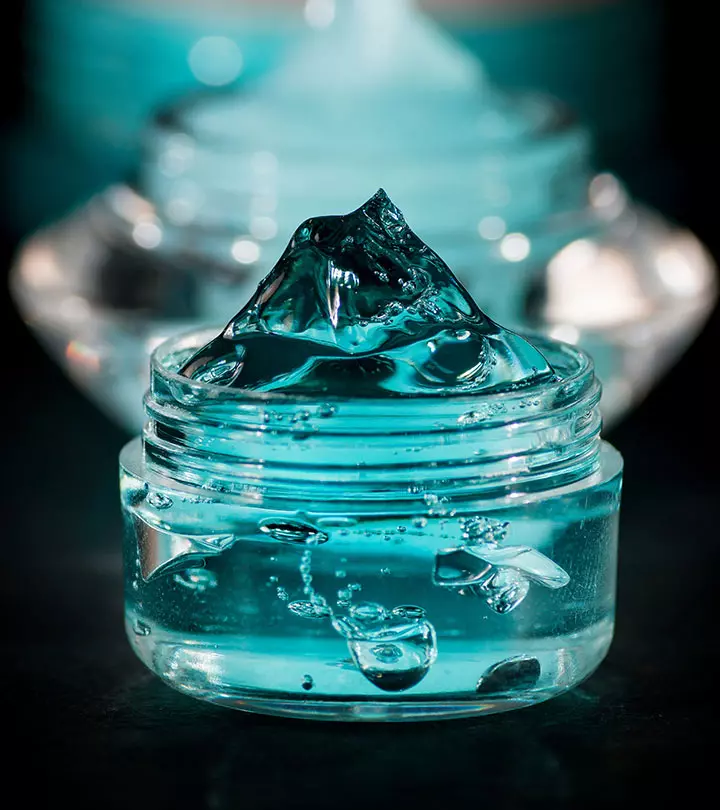
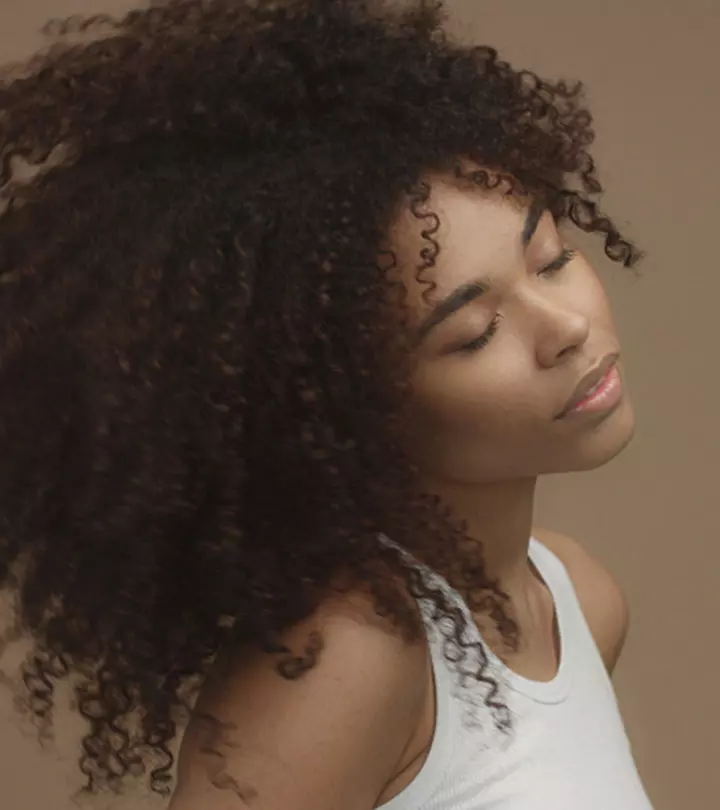
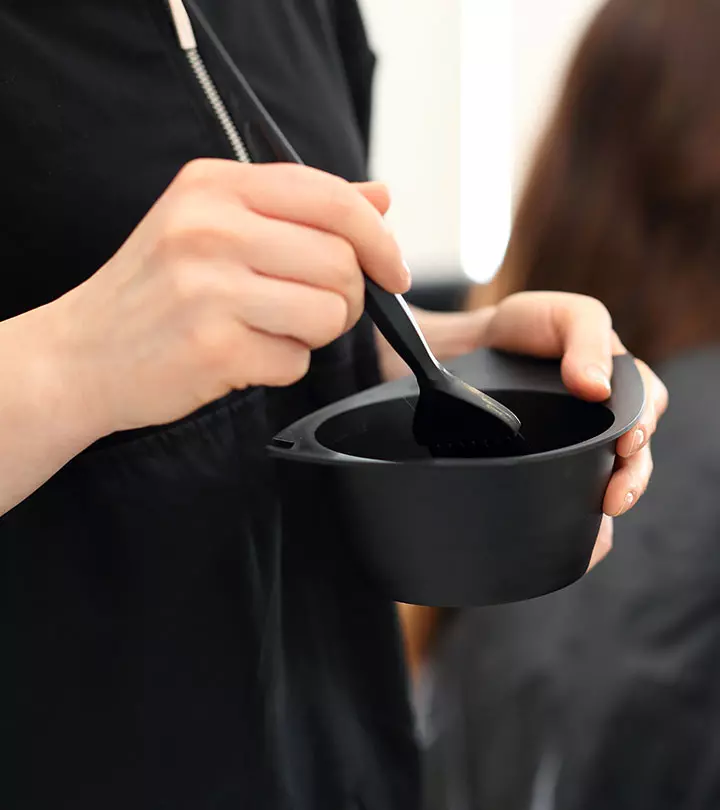
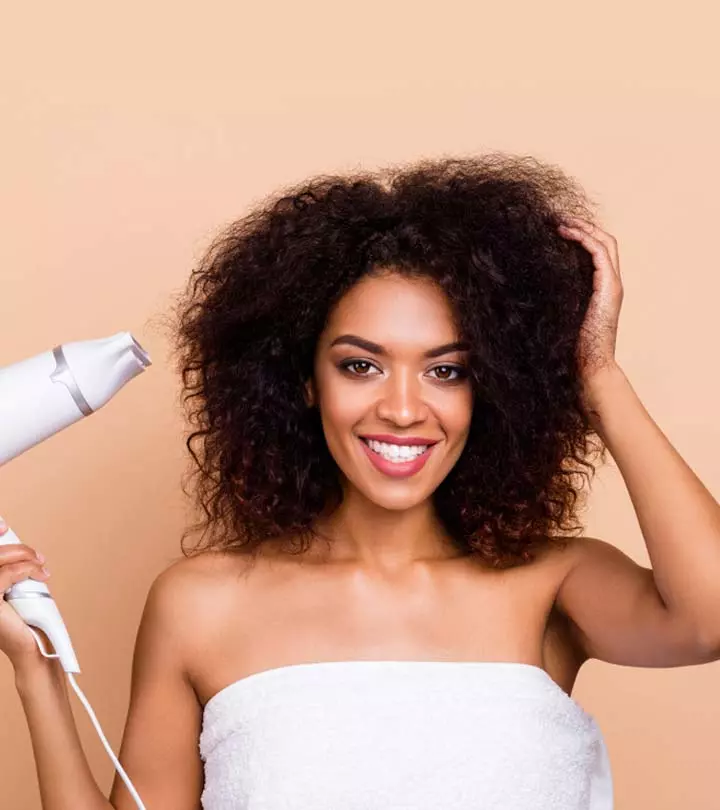
Community Experiences
Join the conversation and become a part of our empowering community! Share your stories, experiences, and insights to connect with other beauty, lifestyle, and health enthusiasts.